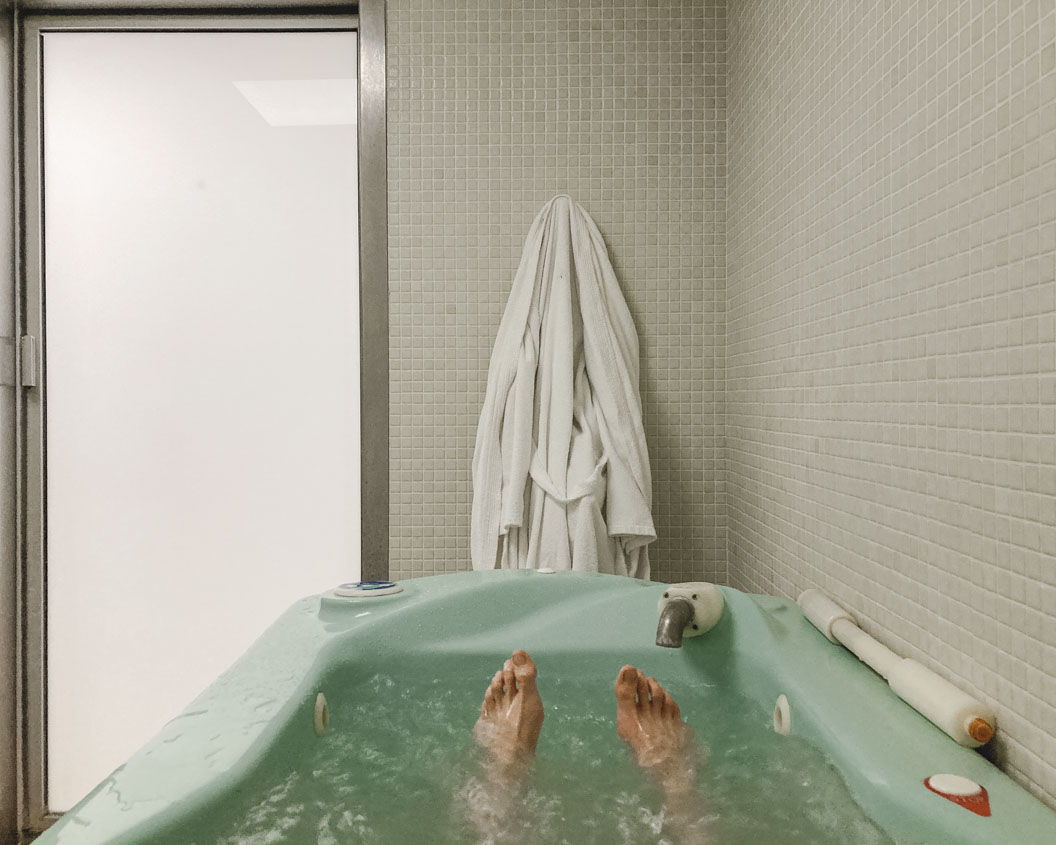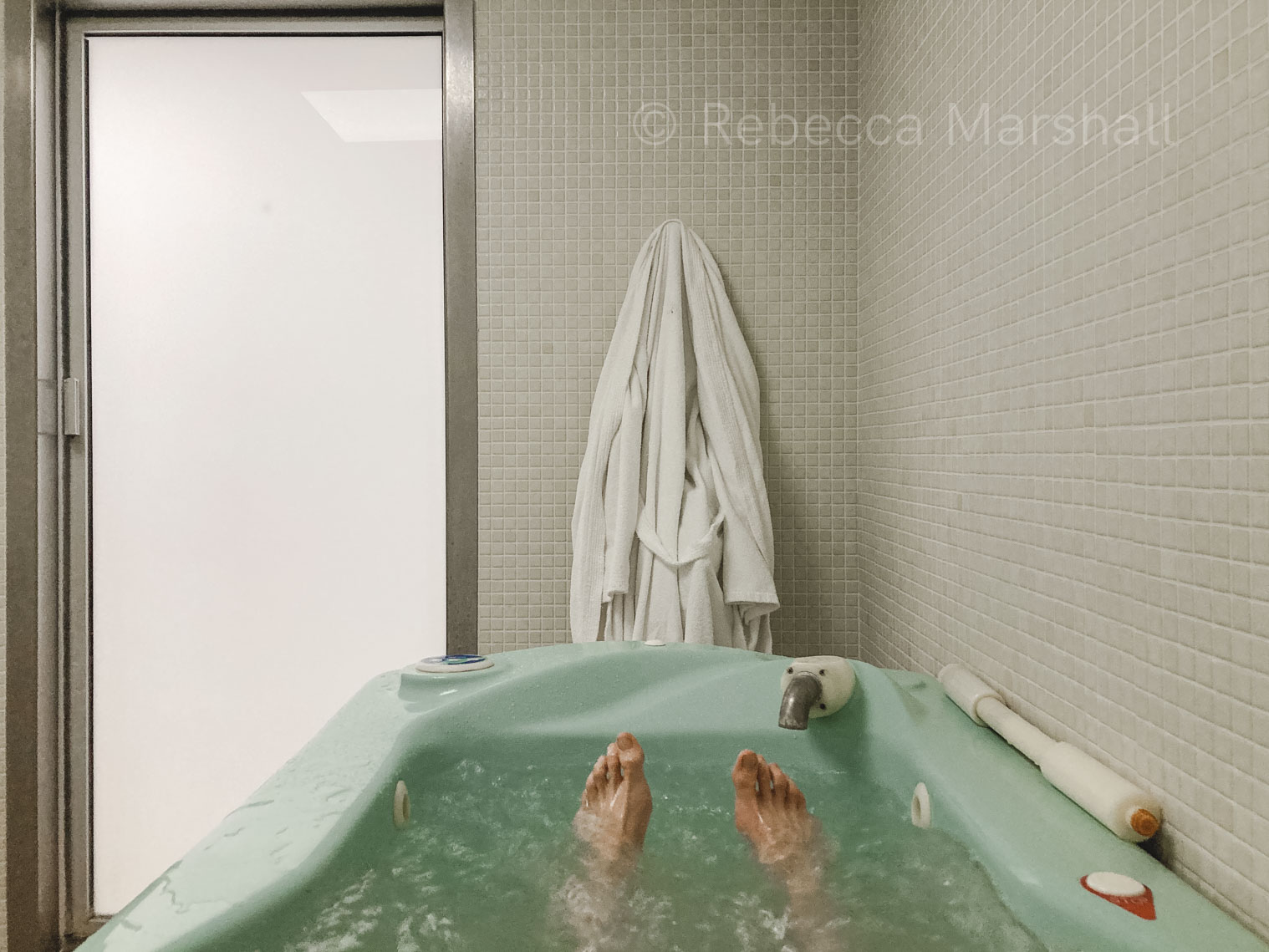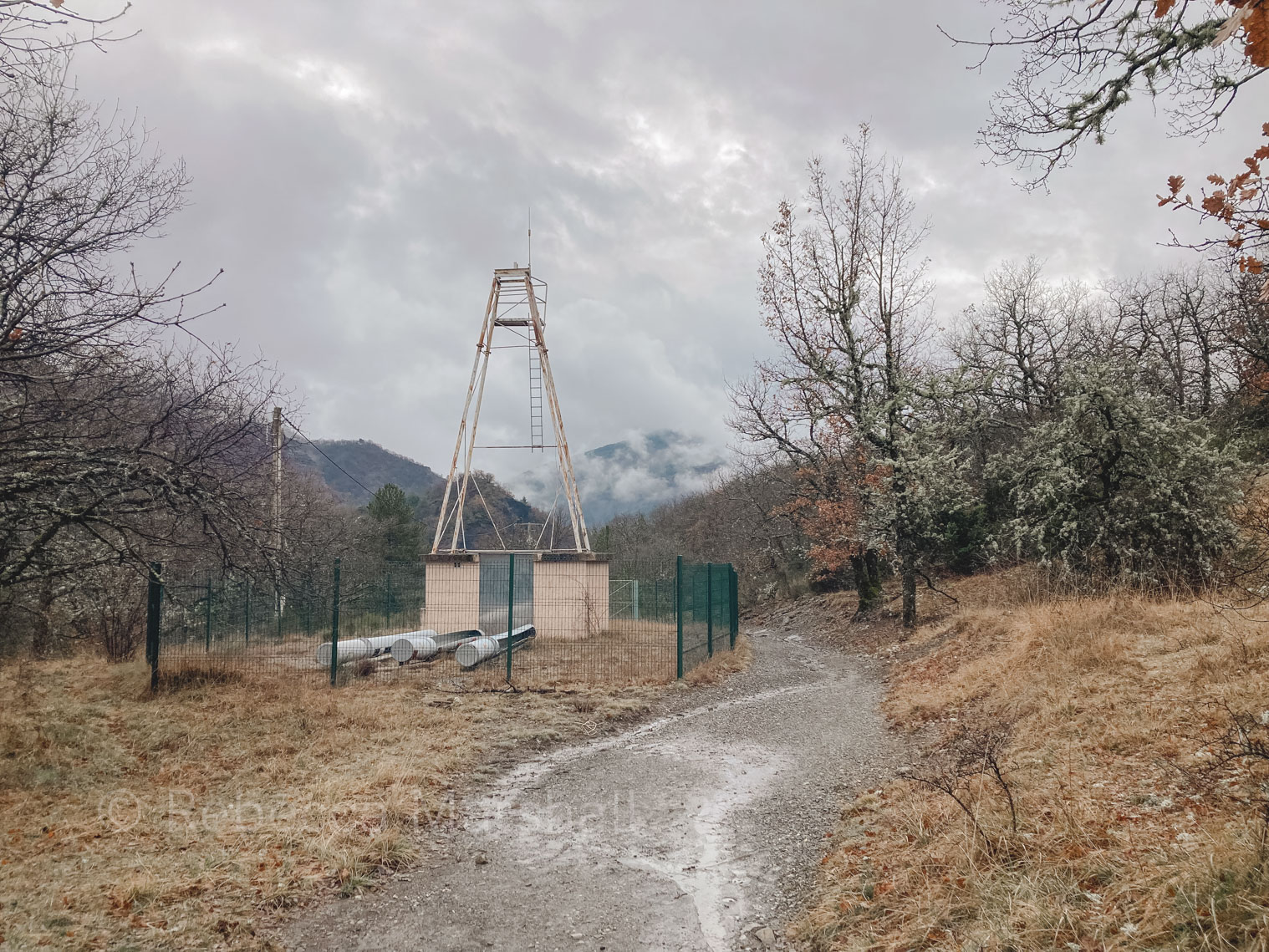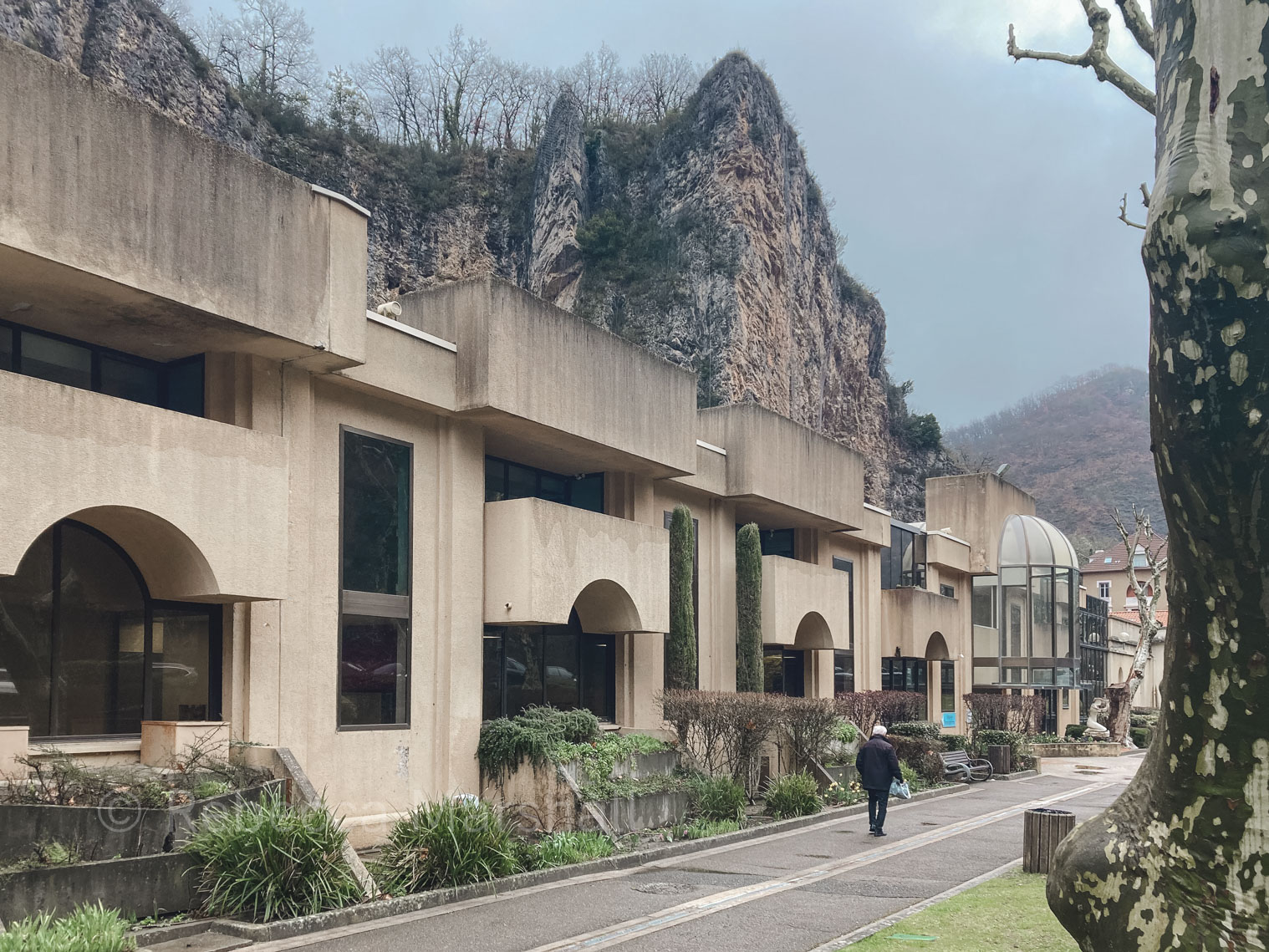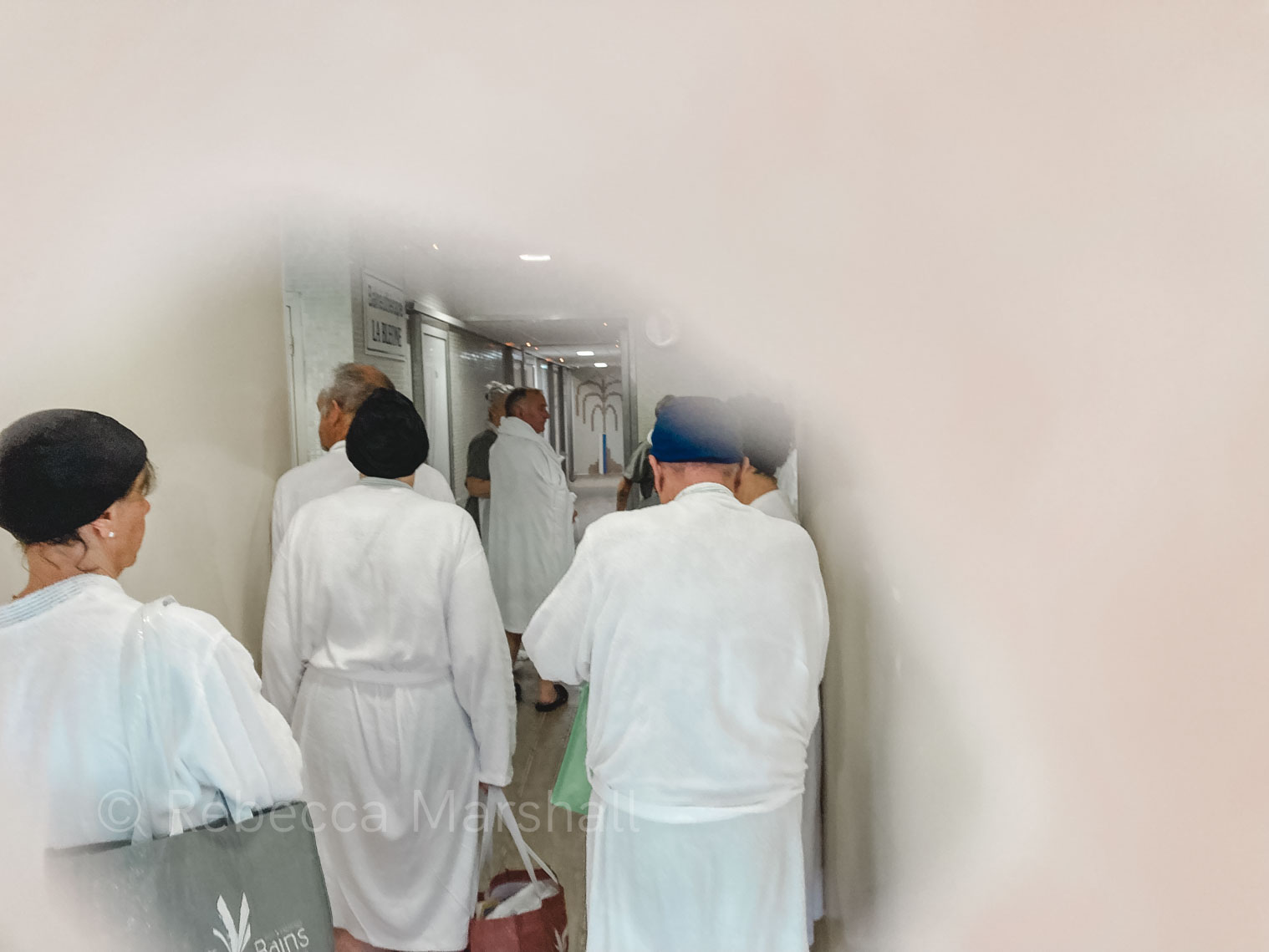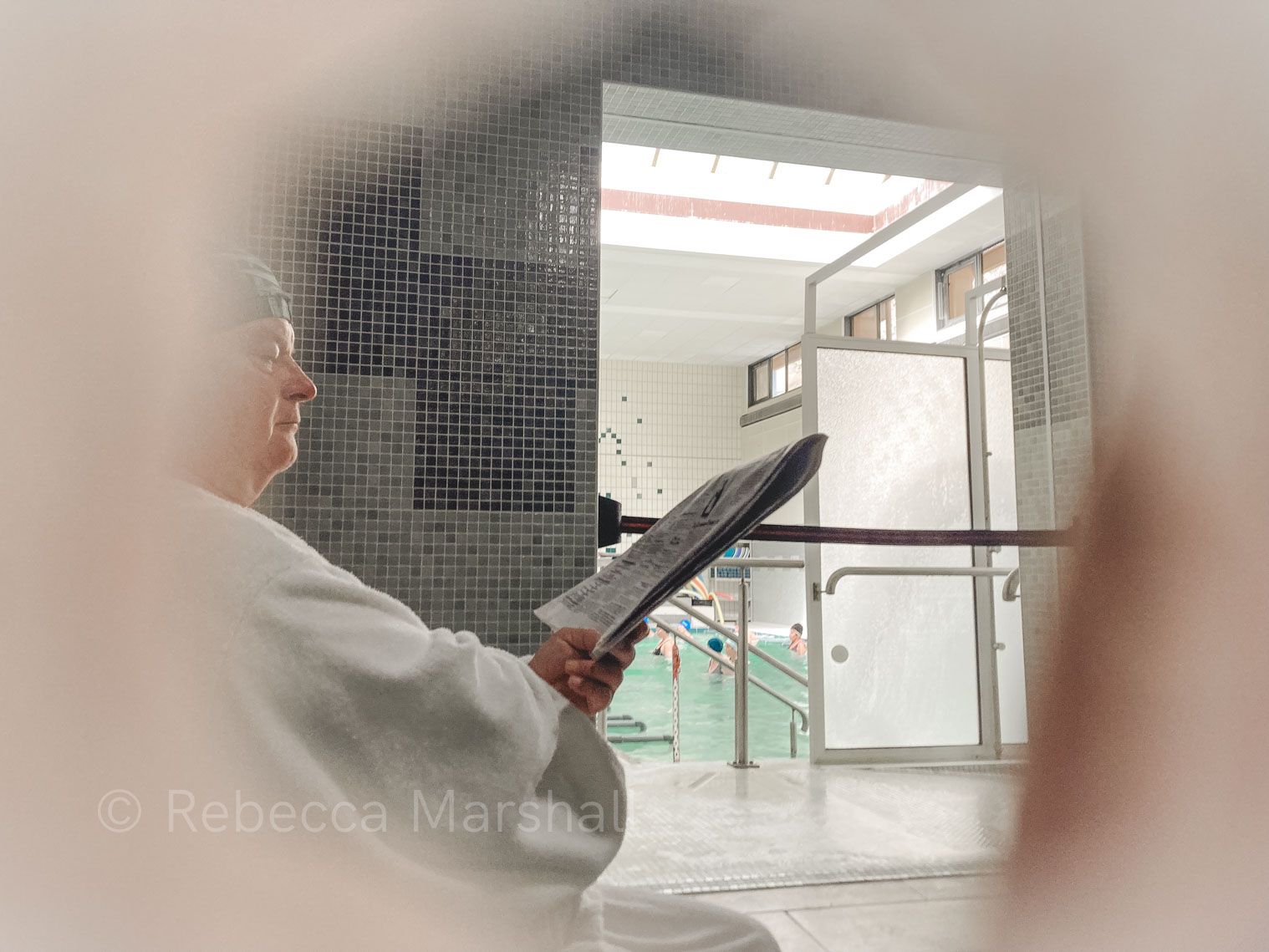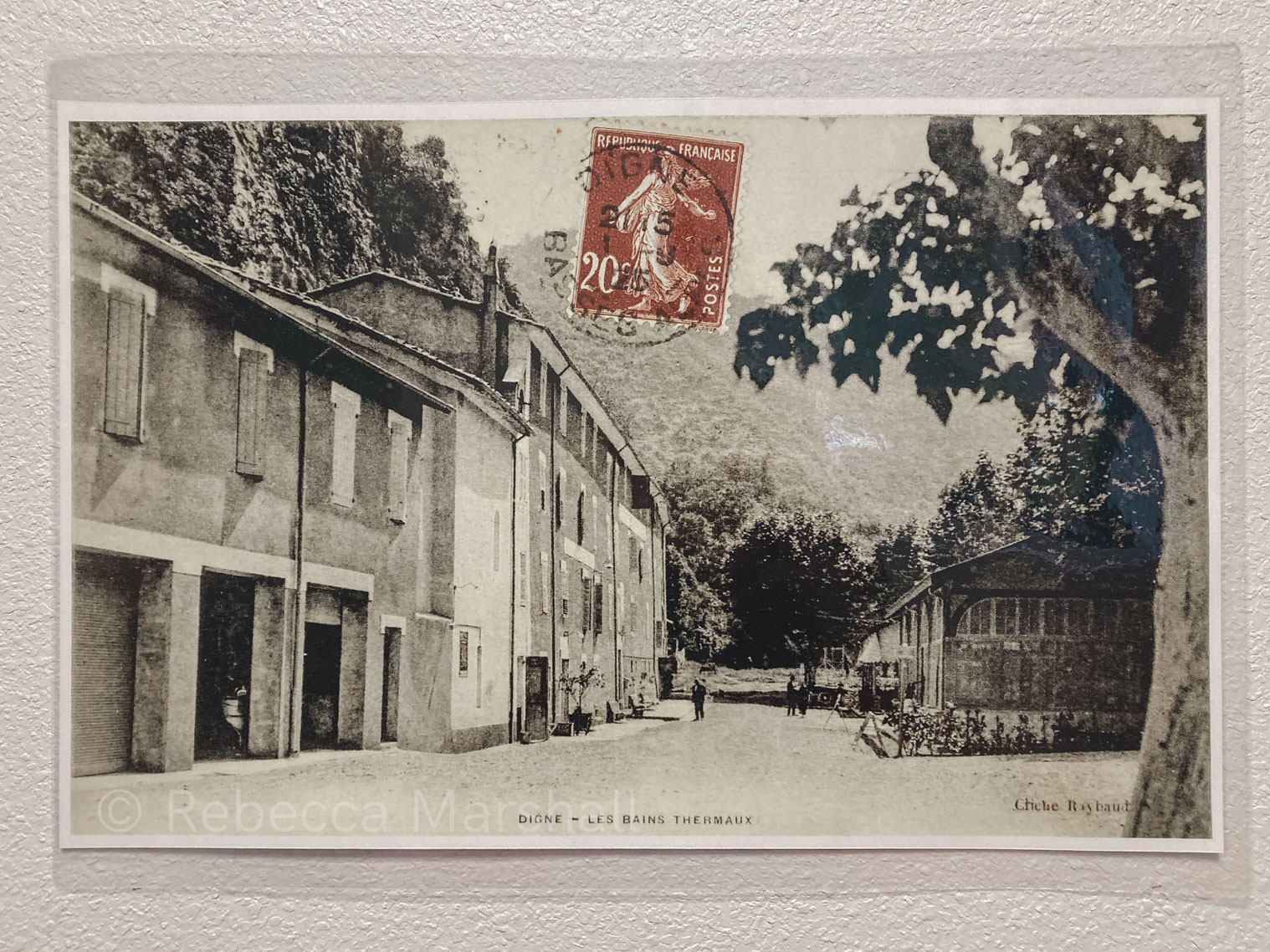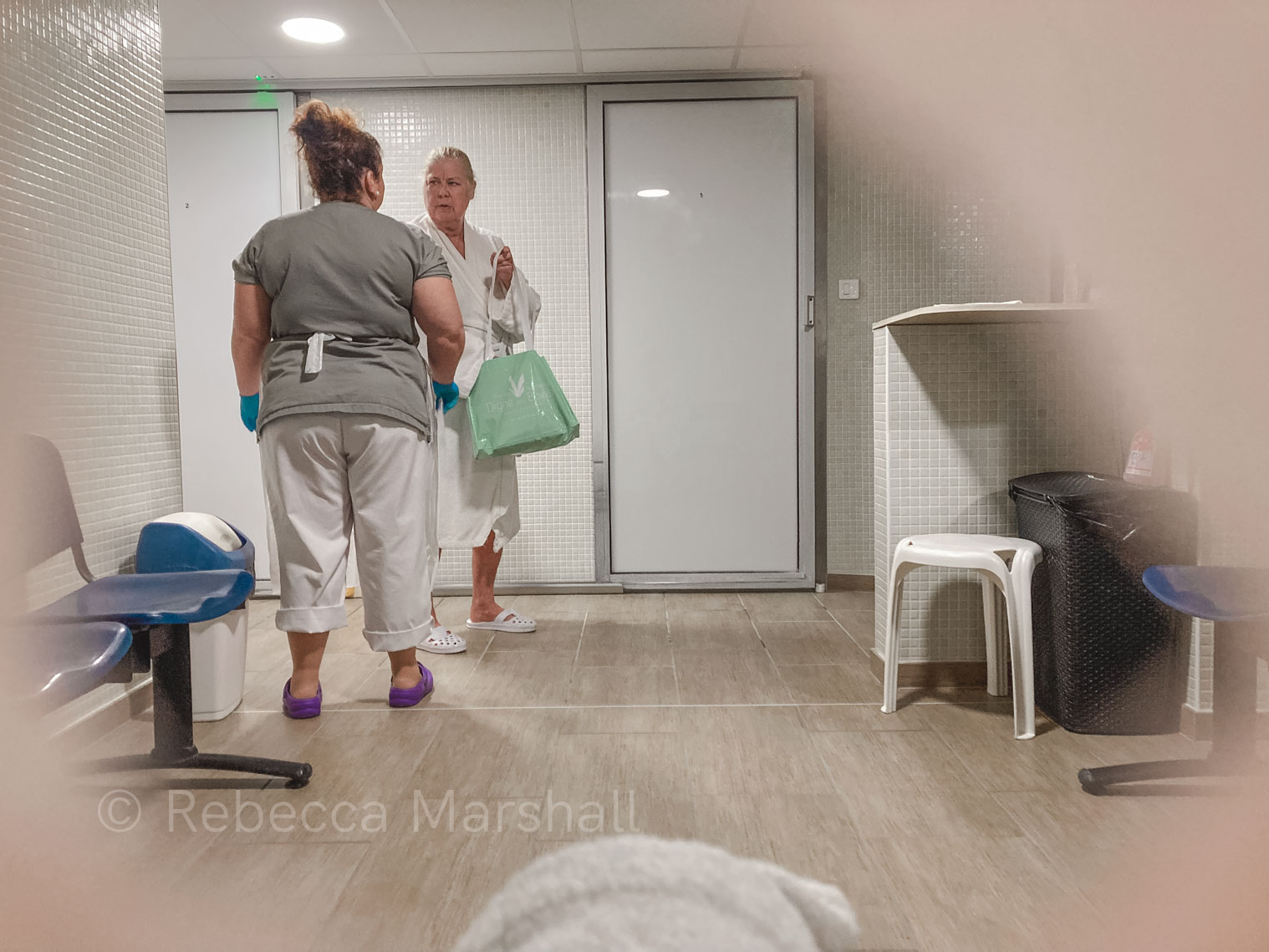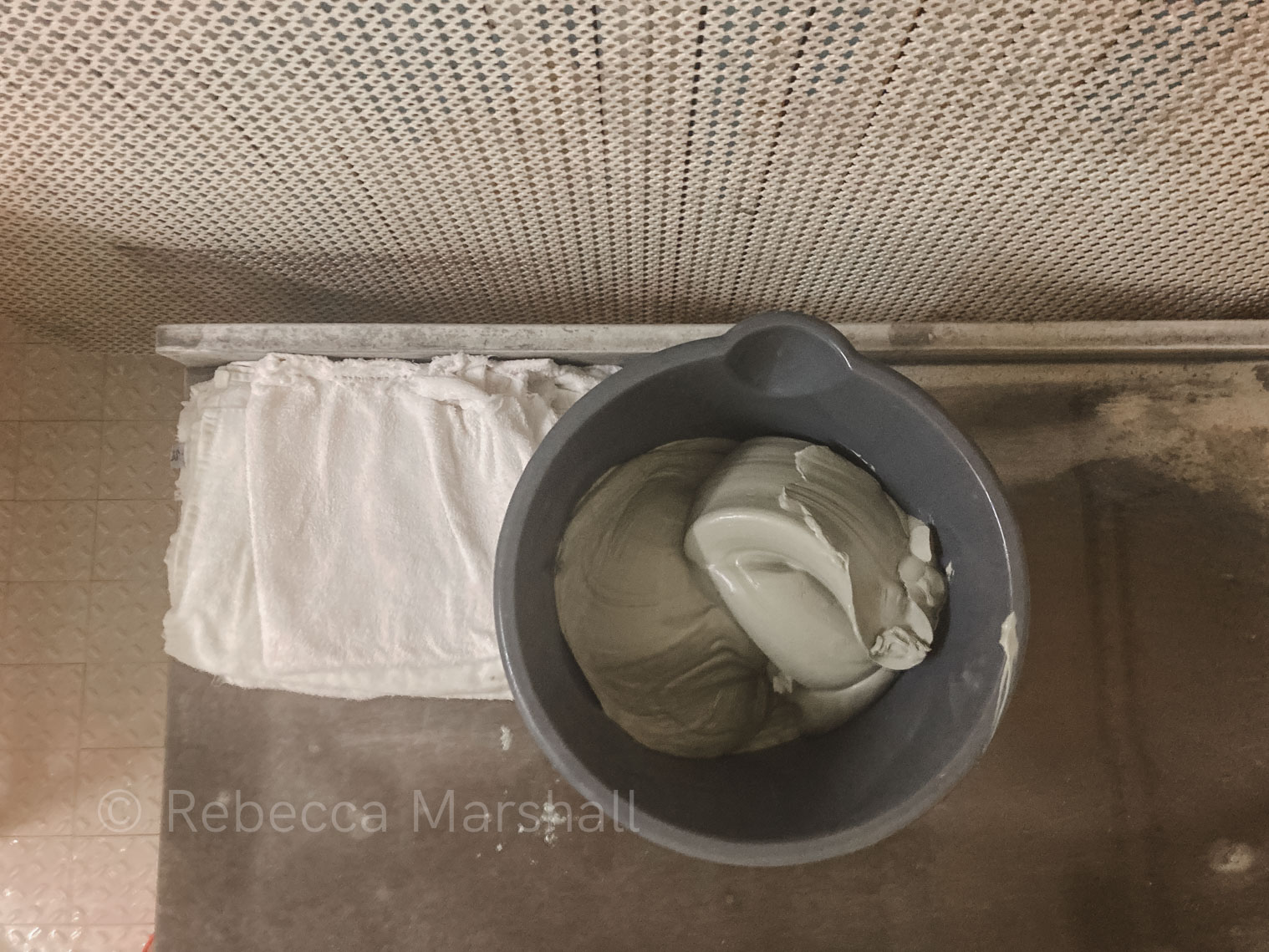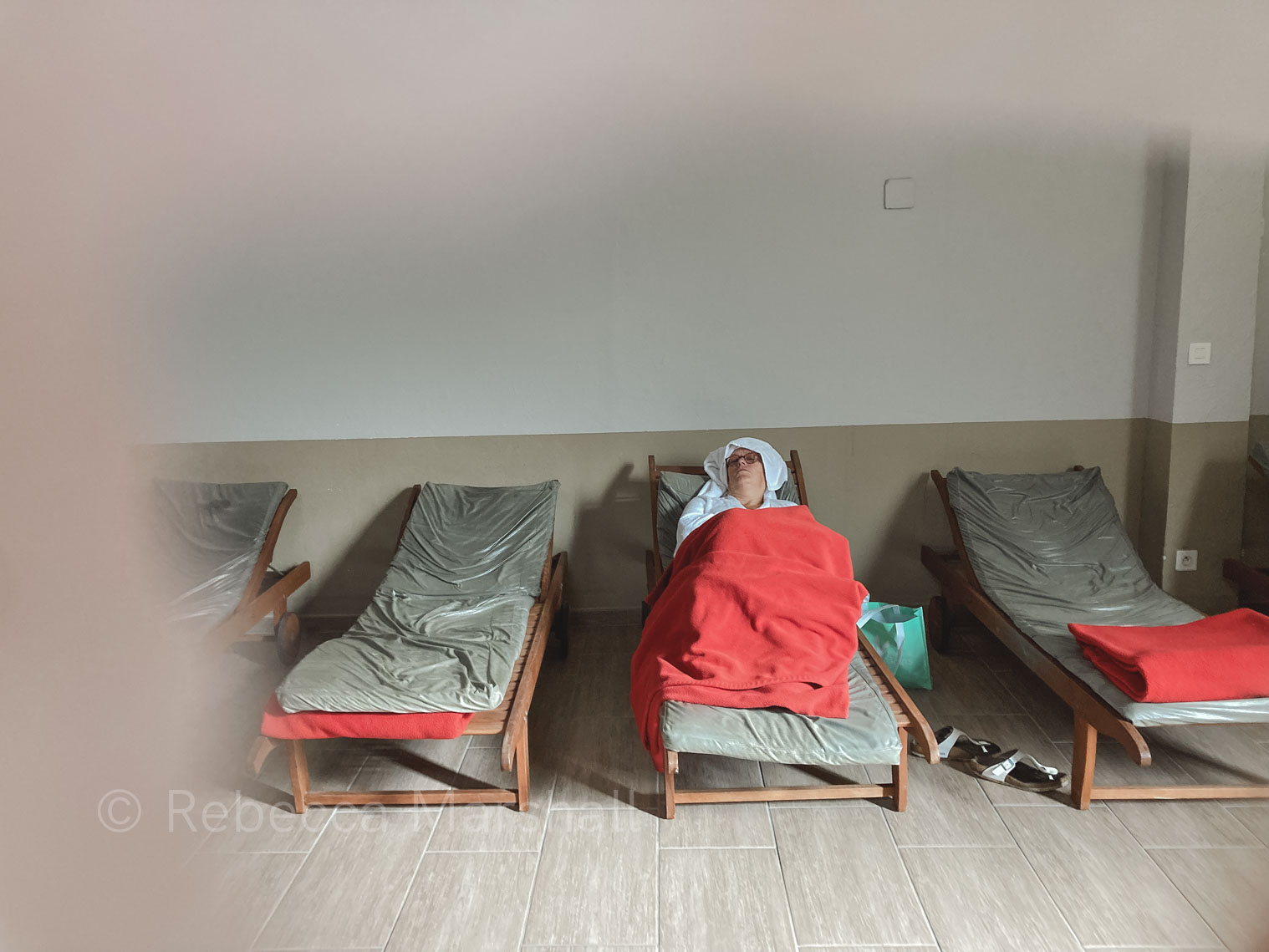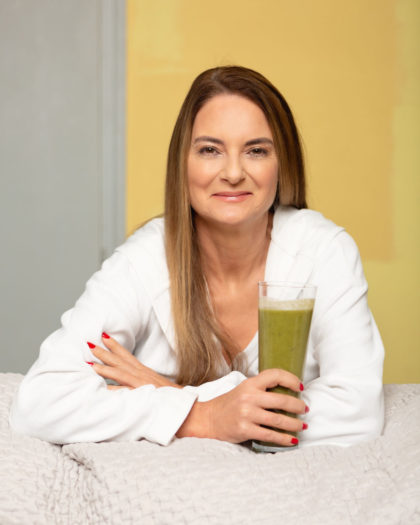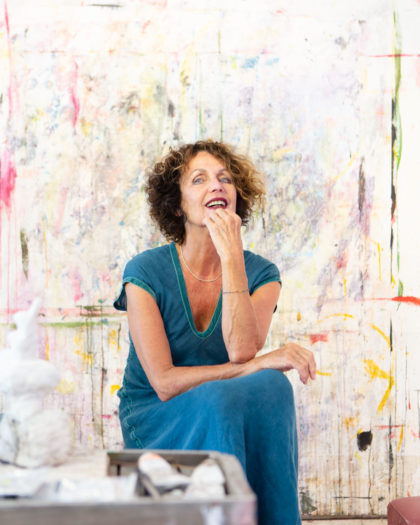Think ‘French mineral water’ and your mind may turn to Evian or Perrier. However, mineral water and its benefits don’t all come bottled. For those suffering from certain chronic health problems, one medical treatment has been developed using water that you definitely shouldn’t drink. A whole network of thermal stations across France offer what is known as a ‘cure’. Mineral-rich water surging up from the bowels of the Earth is pumped, channeled and applied in restorative treatments for hundreds of thousands of people every year. Having been unable to work for a long time with severe shoulder capsulitis – a sub-optimal condition for a photographer – I myself was recently prescribed a three-week rheumatology cure in the French Alps.
The cost of a cure – who pays?
A cure lasts 18 days – 6 mornings a week for 3 weeks – and this duration is non-negotiable. Only one of my friends (also a photographer) had ever been on a cure, and while many are aware of the concept, few have any idea of what the experience is like. Foreign friends imagined a holiday at a luxurious South of France spa and expressed total disbelief that the state pays for most of it.
Anyone who has had anything to do with French administration knows that where the state pays, there is generally a significant personal cost in terms of time and patience. This was no exception. Getting from the doctor’s surgery to my first bath of sulphurous water was a journey in itself. I couldn’t book my cure until the Social Security had authorised my request. Yet I couldn’t get this authorisation until I’d confirmed the cure dates at my chosen thermal establishment…and most of these get booked out well in advance. Are provisional places held? Of course not!
In my rush to get authorisation before the closest station to the French Riviera closed for winter, I drove to the Social Security offices in Nice to hand deliver my form – only to be told they would not accept post by hand. So I drove back to a post office and, much later, received authorisation – one day too late. I found another station in Provence that was open a little later in the year, so repeated the process, which included returning to the doctor for completion of a fresh request form in light of the station name change. After a few days, my form was returned as the doctor had forgotten to stamp the box underneath his signature. By the time that had been rectified and the form re-sent, I got a green light… just too late for the second station. Starting yet again to apply for a date in spring now instead, I had a farcical discussion with one state employee by phone to query a letter I’d received. It had asked me to post them a letter they had earlier posted to me. “But you wrote and sent it to me! Surely that means that you have it?” “Mais non, Madame, we sent it to you.”
Luxury thermal spa? Wrong door
The night before my cure began, I arrived at the studio flat that I’d booked in town, nestled among mountains that rise up from Provence to become the Alps (the Social Security doesn’t pay for accommodation, so most people stay off-site). Early the next morning, before presenting myself at the thermal station, I had an obligatory appointment with a local doctor, whom I’d arbitrarily selected from a list months before. She asked me one or two questions and then coloured in a map representing my body, ticked a few boxes on the back and told me to keep the paper with me at all times. “Apart from your shoulder, what other body parts do you want mud on?” I looked back, baffled. “Well this covers your shoulder and your back, but you can have another couple of spots, if you want. How are your knees?” I mumbled about a fractured toe and she drew a cross there on the map, and on my knees anyway. Now, apparently, I was good to go.
Situated in a valley on the dramatically-named road ‘Torrent des Eaux Chaudes‘ (literally ‘torrent of hot water’ – although I was disappointed to discover that the quiet stream alongside wasn’t either of those things), the thermal complex was built close to the site of an ancient spring of steaming hot, mineralised water (today it is piped from 800 m below). The first part of the building, modern and elegant, contained the ‘Thermal Spa’. It opened at 10.15am for a leisurely start, and treatments on the menu included Pacific or Japanese slimming massages, detox teas and couples’ sessions.
That was not where I was going. Another entrance, further up, this one without a sign, led into a much older wing – the decaying labyrinth that was the medical heart of the thermal station. No Asian inspired treatments or cups of green tea would be served here (or indeed any vittals at all, other than those that drop out of a vending machine) and the carpark was full from 7 am. It may not be a sanatorium à la ‘Magic Mountain’, but Thomas Mann‘s novel did pop into my mind a couple of times as I plunged into the institution which set the scene for my strictly timetabled life as a ‘curiste‘.
Hundreds of silent, white-clad ‘curistes’
At full capacity, up to 700 people ‘take the waters’ here. I was told to sign in 10 minutes before the first of my 4 scheduled treatments every day. Efficient personnel greeted the swarm of arrivals at the reception desk with a brusque ‘Bonjour!‘ and clean but often threadbare dressing gowns, whose sizes were coded by a colour label (I learned to request the green model, which was not only longer but also had loops for the belt. Yes, these things did start to count after a few days). Curistes then filed through changing rooms, where they stripped off all their clothes and accoutrements, put on a swimsuit, stuffed any hair they had left into a bathing hat (a good 30 to 40 years younger than the majority, I had more hair to deal with than most) and padded off to their first session.
From then on, a strange sort of choreography began. Around the wet corridors inside, white-robed, rubber-capped individuals shuffled slowly and silently around each other, going from one appointment to the next. Damp oozed from the walls, and pipes were rusting under constant attack from sulphurous water. Each person clutched an identical mint green plastic bag, issued on arrival along with a plastic cup and the all-important item of the cure: a plastic wallet containing their personalised access badge and comprehensive care card, detailing the times and locations of all treatments. These lasted no longer than 15 minutes and were tabled at times like 07.13, 07.48 and 8.11, with a different schedule every day. The clocks on the wall must be happy, I thought: there were dozens of them, and, as no-one had watches or phones (strictly forbidden), people were constantly looking up at them to check the time, rather than looking down at a device.
I was struck by the quiet (talking was not welcomed during sessions). One large gentleman from Marseille spotted a friend in a communal water bath and shouted above the sploshing: “It’s you! How are you?!” The reply, “Obviously not good, otherwise I wouldn’t be here” was quickly hushed.
Ancient medical treatment
Thermalism is certainly not new. In places blessed with hot water gushing out of the ground, we humans have been submerging ourselves in it as long as we’ve been around. The value of the particular mineral mix in the water where I took my cure had been known since ancient times, notably mentioned in passing by Pliny the Elder. I particularly enjoyed the English language version of the local tourist office webpage explaining why: “The curative properties of these hot waters are linked to their rise along the Triassic gypsiferous levels of the thrust sole of the local nappe.”
It wasn’t until 1947 that the French government considered thermalism to be social medicine worth paying for. Today, millions of euros are spent every year for 600,000 citizens to benefit from the pain relief, recovery of function and quality of life that a cure can provide, when alternative treatments to their chronic conditions have proven ineffective. The station I went to is considered small: some of the 90 thermal stations across France welcome thousands of curistes every day. For some, a cure is not a one-off experience either, as I learned one morning when discreetly applying a dab of shower gel before a post-treatment wash (the only shower option was of the mixed, communal kind, where soap, shower gel and the removal of swimsuits were forbidden. I confess that I broke more than this one rule during my cure). A beady-eyed, elderly lady next to me had spotted my indiscretion, and hissed at me that in all her 30 years as a curiste, she ‘had never known soap to be permitted‘ and I was ‘absolutely never to do it again‘. Sorry, 30 cures ?!
Jets, mud and warm rain
So, what does a cure actually involve? I can’t speak for everyone, but my own daily smorgasbord was made up of several treatments. Hot water pummelling came in various guises, from a kind of jacuzzi on steroids (I quickly learned to avoid sitting over the plughole once my time was up and the water began draining – it was all I could do to grasp the sides tightly enough to stop myself draining with it), to a communal ‘jet wash’ (my words). Here, on the supervisor’s call, dozens of curistes would file into a pool divided into stalls (worthy, if dry, for a row of hay-eating horses). Once the jets were switched on, everyone stood as best they could for a high-pressure, self-directed massage. The effectiveness of this massage depended on the stall you chose. Some of the apparently geriatric jets were quite ineffectual, whereas others could blow you from there to Nice if you weren’t prepared, which led to a somewhat undignified rush as the experienced curistes pushed past each other to be first into the pool. Sadly, the ‘Penetrating Shower’ service was to remain a mystery to me. My doctor, rightly or wrongly, hadn’t considered I would benefit from it.
Group physio exercises in a hot pool were self-explanatory, yet individual massages by a wellington-booted, plastic-clad physio in one of over 20 little rooms with warm thermal water raining down from the ceiling, take experience to accurately picture. My personal favourite was the mud session. In preparation for the hottest of all treatments (green clay is mixed with thermal water at 48°C, give or take – the precision of the temperature was less consistent than you might imagine, to sometimes yelpingly painful results -), I would strip off my swimming costume and lie down on a bench. A steaming bucket of mud would be ejected through a trapdoor (I once or twice witnessed the hairy hands that shot out of the darkness below to deliver it) and a member of staff would come in, check my ‘body map’ and unceremoniously slap fistfuls of mud on me before switching the light off and disappearing. I would often be starting to snooze when she or a colleague would burst back in, tell me to ‘Get up, stand against the wall!‘, and efficiently hose me down.
Photographer undercover
It goes without saying that photography was neither practical inside the station, nor would it have been permitted had I asked (I didn’t. As a photographer, sometimes it is simplest not to). Instead of using my camera to make the pictures you see here, I smuggled in my phone – wrapped in tissue paper with a hole cut in, for maximum discretion. Taking pictures to capture these personal memories was a haphazard exercise to say the least. In silent waiting areas, I pretended to consult my care card, while silently snapping pictures with the phone lens just peeping over the top of it.
So, did my cure cure me? The answer is: no….at least not immediately and not entirely. Yet, after the first week (when if anything I was in more pain, exhausted by the treatments and feeling increasingly sceptical), my pain levels Did start to lessen. I was astonished, too, that the mobility of my shoulder, frozen for months, seemed to be increasing. The improvements did not stop after the cure either – it was over the weeks afterwards that my shoulder improved enough for me to at last start back to work as a photographer. Perhaps the oldest, most natural cures are indeed the best…
> See Reportage portfolio
